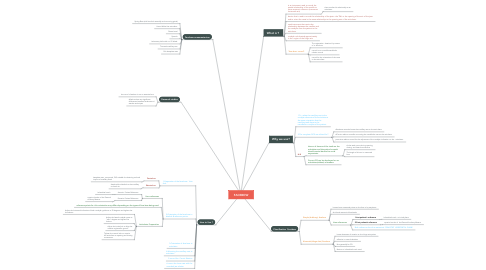
1. What is ?
1.1. is an instrument used to record the spatial relationship of the maxilla to some anatomic reference (transverse horizontal axis)
1.1.1. then transfer this relationship to an articulator.
1.2. device that is used to record the relationship of the jawto the TMJ or the opening of the axis of the jaws and to orient the casts in the same relationship to the opening axis of the articulator.
1.3. used instrument that carries the relationship between the maxillae and the condyles from the patient to the articulator
1.4. condyle rods located approximately in the region of the hinge axis
1.5. “face-bow record”.
1.5.1. The registration obtained by means of a face-bow
1.5.2. record is not a maxillomandibular relation record
1.5.3. record for the orientation of the casts to the articulator.
2. Why we use?
2.1. 1-To relate the maxillary cast to the condylar elements of the articulatorat the same orientation that the maxillary teeth have to the mandibular condyles of the patient.
2.2. 2-The complete OCR are utilized for:?
2.2.1. Afacebow recordto locate the maxillary cast on the articulator
2.2.2. ACentric relation recordfor mounting the mandibular cast on the articulator
2.2.3. protrusive relation record for the adjustment of the condylar inclination on the articulator.
2.3. N.B
2.3.1. the arc of closure of the teeth on the articulator and the patient’s mouth should remain identical to avoid anycontacts.
2.3.1.1. As the teeth move during opening, closing, and lateral movements
2.3.1.2. The length of this arc is measured from
2.3.2. Correct CO can be developed on an articulator(without) a facebow
3. Classification Facebow
3.1. Simple (Arbitrary) facebow
3.1.1. located over measured points on the face or by earpieces
3.1.2. facial and anatomical landmarks
3.1.3. Uses references:
3.1.3.1. 1-Ant patient’s reference
3.1.3.1.1. Infraorbital notch or incisal plane
3.1.3.2. 2-Post patient’s reference
3.1.3.2.1. superior border of the External Auditory Meatus.
3.1.3.3. Both references form the anatomical FRAKFORT HORIZONTAL PLANE
3.2. Kinematic(Hinge Axis) Facebow
3.2.1. locate thecenter of rotation at the hinge axis points
3.2.2. effective in natural dentition
3.2.3. Not generally for CD
3.2.4. Nasion or infraorbital notch used
4. Research studies
4.1. the use of a facebow is not an essential one.
4.2. failed to show any significant differences between facebow and stander techniques
5. Facebow armamentarium
5.1. Spring-Bow (with bite fork assembly and mounting guide)
5.2. Hanau Wide-Vue articulator
5.3. Plaster bowl
5.4. Spatula
5.5. Laboratory knife with no. 25 blade
5.6. Trimmed maxillary cast
5.7. Pink baseplate wax
6. How to Use ?
6.1. 1-Preparation of the face-bow / bite fork.
6.1.1. Dentulous
6.1.1.1. baseplate wax, compound, PVS suitable for obtaining occlusal imprint of maxillary teeth
6.1.2. Edentulous
6.1.2.1. Attached the bitefork to the maxillary occlusal rim.
6.2. 2-Orientation of the face-bow to bitefork & reference points.
6.2.1. Uses references
6.2.1.1. Anterior Patient Reference:
6.2.1.1.1. Infraorbital notch
6.2.1.2. Posterior Patient Reference:
6.2.1.2.1. superior border of the External Auditory Meatus.
6.2.2. reference points for this orientation may differ depending on the types of face-bow being used.
6.2.3. Articulator Preparation
6.2.3.1. Adjust the horizontal inclination of both condylar guidance to 70 degrees and tighten the thumbnuts
6.2.3.2. Adjust the lateral condylar posts to “zero” degree and tighten the locknut
6.2.3.3. Adjust the incisal pin to align the median registration groove
6.2.3.4. Tighten the centric locks to restrict the articulator to opening and closing movements.
